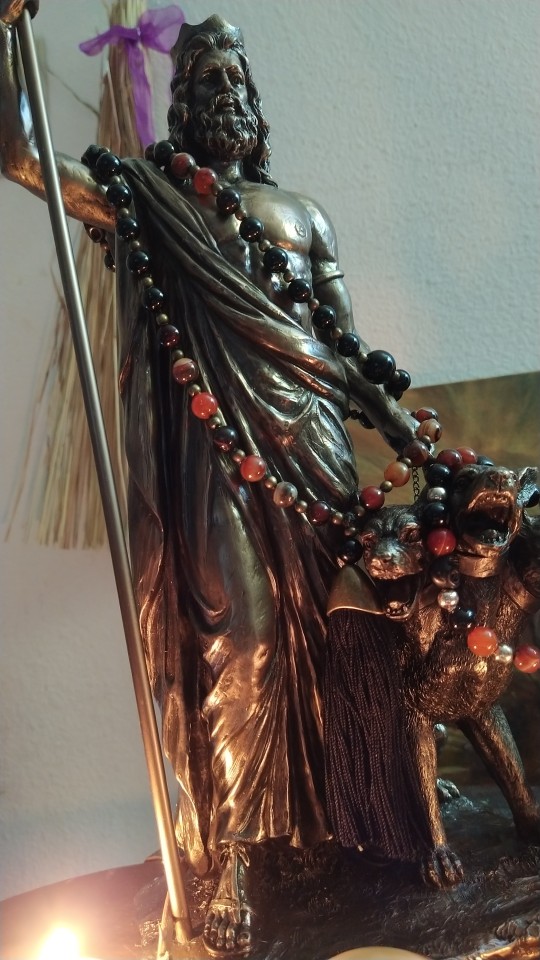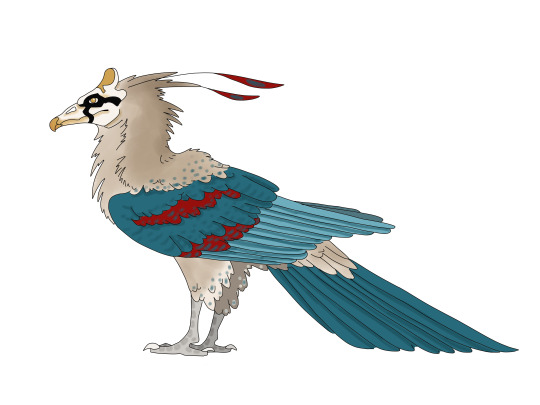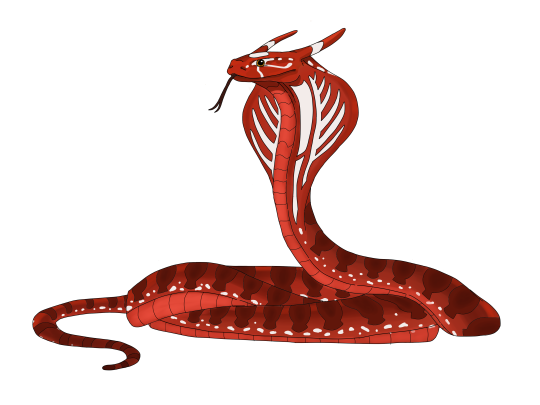Link
129 notes
·
View notes
Text
if you follow me here, please follow me on this new blog!
14 notes
·
View notes
Text
if you follow me here, please follow me on this new blog!
14 notes
·
View notes
Text
if you follow me here, please follow me on this new blog!
14 notes
·
View notes
Text
if you follow me here, please follow me on this new blog!
14 notes
·
View notes
Link
My new blog is here, I will be remaking this blog on that new account. Please go follow that new account on my main blog! I will announce on the blog when I finish setting up my side accounts!
129 notes
·
View notes
Text



Oh God of the Dead, where spirits reside,
Oh God of Wealth, of all under the skies.
Oh Bride of Death, dutiful and Loyal,
Oh Lady of Spring, caught in death's coil.
Praise, to you, Hades, Lord of the Underworld,
Praise to you Persephone, Queen of the underworld.
-=-=-=-=-=-=-
My Persephone statue came AND thr Hades beads came. (The beads are from etsy.com/ENSORCLES; The statues are Veronese!)
I'm so happy they made it.
31 notes
·
View notes
Photo

Personifications of the stars and constellations in the tomb of Seti I
260 notes
·
View notes
Text
Hellenic polytheism - free (and reliable!) resources
Updated 28 August 2020
The Homeric Hymns: http://www.theoi.com/Text/HomericHymns1.html
The premier translations of The Homeric Hymns by Apostolos N. Athanassakis are also available to read online for free: https://archive.org/details/homerichymns00home and https://archive.org/details/homerichymns00atha
The Orphic Hymns: http://www.theoi.com/Text/OrphicHymns1.html
The Delphic Maxims: https://www.scribd.com/document/186693295/Delphic-Maxims
Many other primary sources from ancient Greece can be found in English translations at theoi.com, which is a fantastic resource for information about the Theoi.
Modern prayers to the Theoi:
Hearthstone: https://greekpagan.com & https://greekpagan.tumblr.com/ Note: downloads of Hearthstone’s two books of Hellenic prayers can be purchased at https://www.etsy.com/shop/HearthfireHandworks
winebrightruby: https://winebrightruby.tumblr.com/devotional
Some of the best and most essential sources to start with - and for continuous reference, in my opinion:
Adam, John. The Religious Teachers of Greece. Clifton, New Jersey: Reference Book Publishers, Inc, 1965. https://www.giffordlectures.org/lectures/religious-teachers-greece
Adkins, Lesley and Adkins, Roy A. Handbook To Life In Ancient Greece https://archive.org/details/handbooktolifein00adki
Betegh, Gabor. Greek Philosophy and Religion. https://www.academia.edu/4990433/Greek_Philosophy_and_Religion
Burkert, Walter. Greek Religion https://archive.org/details/greekreligionarchaicandclassical
Dillon Matthew. “Household, Families and Women” in Kindt, J. Eidinow, E. (eds) The Oxford Handbook of Religion in the Ancient World, Oxford University Press, Oxford, 2015. https://www.academia.edu/7974646/HOME_AND_HEARTH._THE_CLASSICAL_GREEK_EXPERIENCE_OF_DOMESTIC_RELIGION_in_Kindt_J._Eidinow_E._eds_The_Oxford_Handbook_of_Religion_in_the_Ancient_World_Oxford_University_Press_Oxford_2015
Furley, WIlliam D. and Jan Maarten Bremer. Greek Hymns: Selected Cult Songs from the Archaic to the Hellenistic period. Part One: The texts in translation.Tübingen: Mohr Siebeck, 2001. http://webcache.googleusercontent.com/search?q=cache:P6t4r1tHe4YJ:129.206.119.53/~q67/Info/HymnsIntro.pdf+&cd=1&hl=en&ct=clnk&gl=us
Garrett, Jan. Did Socrates ‘Teach New Deities’? Or: Homer’s Gods, Plato’s Gods http://people.wku.edu/jan.garrett/pgods.htm
Hesiod. Theoany https://www.theoi.com/Text/HesiodTheogony.html
Hesoid. Works and Days https://www.theoi.com/Text/HesiodWorksDays.html
Kindt, Julia. “Personal Religion: A Productive Category for the Study of Ancient Greek Religion?” The Journal of Hellenic Studies, vol. 135, 2015, pp. 35–50., www.jstor.org/stable/44157346
Koutoupas, A. “The Meaning of Reciprocity in Ancient Greek Religion.” https://www.academia.edu/12126893/The_Meaning_of_Reciprocity_in_Ancient_Greek_Religion
Meyer, Marvin.The Ancient Mysteries: A Sourcebook: Sacred Texts of the Mystery Religions of the Ancient Mediterranean World https://archive.org/details/ancientmysteries0000unse_p7i2
Morford, Mark, P.O., Lenardon, Robert J. and Sham, Michael. “The student companion to Classical Mythology, Tenth Edition”: https://global.oup.com/us/companion.websites/9780199997329/
Otto, Walter. The Homeric Gods https://archive.org/details/in.gov.ignca.4448/page/n5/mode/2up
Petrovic, Andrej, and Petrovic, Ivana. “Introduction” in Inner Purity and Pollution in Ancient Greek Religion Vol I. https://www.academia.edu/30262742/Introduction_in_Inner_Purity_and_Pollution_in_Ancient_Greek_Religion_Vol_I
Rask, K.A. “Devotionalism, Material Culture, and the Personal in Greek Religion.” https://journals.openedition.org/kernos/23
William Smith, D.C.L., LL.D. A Dictionary of Greek and Roman Antiquities John Murray, London, 1875. Articles on Greek and Roman religion, including divination, festivals, funerals, magic, priestly officers, and rituals: https://penelope.uchicago.edu/Thayer/E/Roman/Texts/secondary/SMIGRA/Religion/home.html
Whitmore, Emily. Personal Religion in ancient Greece. https://www.academia.edu/8729313/Personal_religion_in_ancient_Greece
Woodward, Roger D. The Cambridge Companion to Greek Mythology https://archive.org/details/TheCambridgeCompanionToGreekMythology/page/n1/mode/2up
Also, please feel free to ask me questions or contact me about books/articles on specific topics related to Hellenic polytheism!
3K notes
·
View notes
Text
Haides Introduction + Resources

Haides (Also known as Pluton and Aidoneus)
God of & Divine Functions:
King of the underworld
The Dead
Funerary rites & mourning
Necromancy (Divination via the dead)
Ghostly visitations
Curses & Master of the Erinyes
Master of dreams (particularly from the dead)
Mining & precious metals
Earth’s fertility
Other aspects found in epithets & worship:
Of good counsel (Haides Eubouleus)
Glorious/Renowned (Haides Euclius)
He who receives many (Haides Polydegmon)
Host of many (Haides Polydegmon)
Conducts (Haides Agetes or Hegetes)
To flourish (Haides Altor)
Sovereign of Tartarus (Haides Larthy Tytiral)
To rest (Haides Quietalis)
To impel (Haides Urgus)
Receiver of the dead (Haides Necrodegmon)
Saviour of the dead (Haides Necron Soter)
The god who binds all equally (Haides Isodetes)
Obviously, Haides is chthonic.
Haides had very few representations in classical art. When he is shown, Haides is usually depicted with a dark beard, with a sceptre, or a cornucopia.
Haides is sometimes misunderstood, especially due to some modern media comparing him to the devil. He’s really not, come on guys.
He was feared in antiquity, due to him ruling over the underworld. People feared his name, and preferred to use epithets to refer to him, such as Pluton.
Most interestingly enough, Haides also had oracles in antiquity in Thesprotia and Cumae. These oracles were capable of necromancy, aka divination via the dead.
Symbols/Attributes:
Royal Sceptre
Cornucopia
A key
Snakes
Kerberos
Sacred Animals:
Screech Owl
Rooster
Sacred Plants:
Mint
Asphodel
White poplar
Shrine Ideas:
Things associated with death
Riches: gold, silver, bronze, etc.
Screech Owls
Snakes
Keys
Offering ideas:
General Offerings: Water, Unmixed Wine, Milk, etc.
Riches & jewels
Plants, flowers, especially the white poplar
Feathers
Devotional Activities:
Caring for graveyards
Saving money
Studying the earth
Studying funerary rites
Honouring the dead
Necromancy
Donating to charities and such
Cult Locations:
Attica
Corinth
Argolis
Laconia
Elis
Phocis
Thesprotia
Caria
Cumae
Historical Hymns:
Orphic Hymn 18: To Haides
Other:
He had oracles in antiquity
Haides is a prominent figure in Orphic thought
Thanks anon for the request! I hope it’s good. I had this one halfway done, but then I started to procrastinate.
Resources + Sources:
https://www.theoi.com/Khthonios/Haides.html
https://en.m.wikipedia.org/wiki/Hades
https://www.theoi.com/Cult/HaidesCult.html#Titles
Aesthetic Image from: https://aly-naith.tumblr.com
- Adrian Dionysoniketes, Adri_Le_Chat
62 notes
·
View notes
Text
Incantation of the Four Weapons
“สักกัสสะ วะชิราวุธัง เวสสุวัณนัสสะ คะธาวุธัง อาฬะวะกัสสะ ทะสาวุธัง ยะมะนัสสะ นะยะนาวุธัง สัพเพเทวา ปีสาเจวะ อาฬะวะกาทะโย ปิจะขัคคัง ตาละปัตตัง ทิสสะวา สัพเพยักขา ปะลายันติฯ”
Can be chanted to drive away malignant entities (ghosts, human or otherwise), to consecrate water to cleanse the house or to bless rice to be strewed in the corners of the home, among other uses in consecration and exorcism. The most common use is using it to bless a มีดหมอ which literally translates to doctor’s blade, a blade a witch-doctor uses, and to dip the blade into water to exorcise any unwanted spirits.
According to the monk หลวงพ่อปาน from the temple of วัดบางนมโค
The first phrase สักกัสสะ วะชิราวุธัง refers to the วชิราวุธ which is the weapon belonging to Phra In (Indra)
The second phrase เวสสุวัณณัสสะ คะทาวุธัง refers to the club belonging to Tao Wessuwan, the ogre/yak who is known to be a protector of holy sites
The third phrase อาฬะวะกัสสะ ทุสาวุธัง refers to the บ่วงบาศ which is a lasso belonging to ท้าวอาฬวกยักษ์ (a yak/ogre who received a blessing from Tao Wessuwan which allowed him to eat whoever rested within the shade of the tree he lives in. He later encounters Buddha- long story).
The forth phrase ยะมะนัสสะ นะยะนาวุธัง refers to the นัยน์ตา which is the weapon belonging to Phraya Yom, the ruler of the underworld.
The incantation invokes the power of these legendary weapons. The are various varations on the incantation, some calling upon an additional weapon belonging to Phra Narai, an incarnation of Visnu.
25 notes
·
View notes
Photo

Wadjet
Cobra goddess of Northern Egypt- Protector of children and kings and an Eye of Ra. Here she’s depicted in the marshes of the Nile.
A $50 8.5 x 5.5 commission from Etsy.
Etsy | Donate | Commissions are Always Open
253 notes
·
View notes
Text
The Mysteries of Osiris

The Mysteries of Osiris was the most important religious event of the year in ancient Egypt. It was celebrated in all major cities, including Thonis-Heracleion and Canopus, where even the Greeks who lived in those cities took part.
It reenacted the murder and revival of Osiris, Egyptian god of the underworld. Osiris was one of the most important and popular gods in ancient Egypt. All pharaohs were believed to descend from him, as living incarnations of Osiris’ son, Horus. Osiris presided over the tribunal of the underworld, offering the promise of life after death for the deceased who were ‘justified’ in the eyes of the gods. He was also associated with fertility and the annual regeneration of nature.

Osiris, his sister-wife Isis, and their son Horus formed a sacred family, worshipped across Egypt and beyond. They became increasingly popular during the first millennium BC. Annually, in every temple-city in Egypt, the god was celebrated in this most important religious festival.
The Mysteries of Osiris took place between the 12th and 30th of the month of Khoiak (mid-October to mid-November), when the Nile retreated, depositing fertile soil ready to be sown. Every year, two figures of Osiris were prepared by priests in the secrecy of the temple. One was made of soil and barley grains, and the other was made of expensive ingredients including ground semi-precious stones. These sacred figures were carried in procession to their final resting place at the end of the ritual celebrations.
For a long time, the Mysteries were known only from depictions in temples and ancient texts. However, recent astonishing underwater finds allow us to see ritual equipment and offerings associated with the Mysteries for the first time.

Discovered behind the shrine of Amun-Gereb in his temple at Thonis-Heracleion, this vat was used during the Mysteries of Osiris. On the first day of the Mysteries, the mummy-shaped figure of Osiris – made with a gold mould of two halves using soil, barley grains and water from the Nile – was deposited in a garden tank where it was carefully watered for eight days in a row, until it germinated.

This image shows a priest watering the germinating Osiris figure, in a depiction from the Temple of Philae.
Find out more about the Mysteries of Osiris in the BP exhibition Sunken cities: Egypt’s lost worlds (until 27 Nov 2016).
Experience the Festival of Osiris in our free late event on Friday 28 October. Enjoy themed food and drink, workshops and performances!
A statuette of Osiris and a model of a processional barge for the god, shown in their place of excavation at Thonis-Heracleion. Photo: Christoph Gerigk. © Franck Goddio/Hilti Foundation.
Standing statue of Osiris. Medinet Habu (modern Luxor), 664–610 BC. On loan from Egyptian Museum, Cairo. Photo: Christoph Gerigk. © Franck Goddio/Hilti Foundation.
Pink granite garden vat. Thonis-Heracleion, Egypt, Ptolemaic Period, 4th–2nd century BC. Maritime Museum of Alexandria. Photo: Christoph Gerigk. © Franck Goddio/Hilti Foundation.
Reproduced from George Bénédicte’s Temple de Philae, 1893.
679 notes
·
View notes
Text
Ma’at - list of pdfs
Translations of Ancient Egyptian Wisdom Texts
☀️ Instructions of Ptahhotep
http://www.ucl.ac.uk/museums-static/digitalegypt/literature/ptahhotep.html
☀️ Instructions of Kegemni
http://www.reshafim.org.il/ad/egypt/texts/kagemni.htm
☀️Instructions of Amenemhat
http://wsrp.usc.edu/information/REL499_2011/Instruction%20of%20King%20Amenemhet.pdf
☀️Loyalist Instructions
http://www.reshafim.org.il/ad/egypt/texts/sehetepibre_stela.htm
Modern Scholarship
☀️ The Ancient Egyptian Concept of Ma’at: Reflections on Social Justice and Natural Order by R.J. Ferguson.
http://epublications.bond.edu.au/cgi/viewcontent.cgi?article=1012&context=cewces_papers
☀️The Concept of Law and Justice in Ancient Egypt with specific reference to the Tale of the Elequent Peasant by N.J. van Blerk
http://uir.unisa.ac.za/bitstream/handle/10500/2447/dissertation.pdf
☀️The Representations of Law and Justice in Ancient Egypt by J.G. Manning
http://digitalcommons.law.yale.edu/cgi/viewcontent.cgi?article=1378&context=yjlh
☀️Law and Order in Ancient Egypt: the development of criminal justice from the Pharoanic New Kingdom to the Roman dominate by A.J. van Loon
https://openaccess.leidenuniv.nl/bitstream/handle/1887/30196/Law%20and%20Order%20in%20Ancient%20Egypt.pdf?sequence=1
☀️Innocent Suffering in Ancient Egypt by D.P. Bricker
http://www.tyndalehouse.com/tynbul/library/TynBull_2001_52_1_04_Bricker_SufferingEgypt.pdf
Depictions in Art and Architecture
☀️The presentation of Ma’at: Rituals and Legitimacy in Ancient Egypt by E. Teeter
https://oi.uchicago.edu/sites/oi.uchicago.edu/files/uploads/shared/docs/saoc57.pdf
☀️ Ma’at as a Theme in Ancient Egyptian Tomb Art by T.M. Schroeder
https://digitalcommons.kennesaw.edu/cgi/viewcontent.cgi?article=1049&context=ojur
☀️ Keeping Ma’at: an astronomical approach the orientation of temples in Egypt by J.A. Belmonte and M. Shaltout
http://www.uranos.fr/PDF/ETUDES_19_D02_TEN.pdf
822 notes
·
View notes
Note
What do you mean by "Keeper of Persephone and Hades" and "Keeper of Sif"?
I am a Devotee of Persephone and Hades, and Sif, but the word Devotee felt too little, I guess? Caretaker is a good word, but I don’t handle them they handle me. My shrines are technically publica and anyone can request me to bring their struggles to those gods.
Small Edit: Essentially, my shrines contain what I guess are called “Living Icons”, in which I care for them daily, and they are “living” a part of them inside the statue.
3 notes
·
View notes
Photo




My artwork of the Netjer. I did a lot over the last couple weeks.
Aset, Banebdjedet, Nebt-Het, and Heqet!
The Nebt-Het piece was done after a dream I had about her! :) --- Please ask before using my artwork.
79 notes
·
View notes

